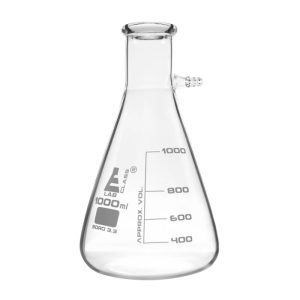Glass flat bottom flasks are common in the lab environment especially in chemistry labs. As their name suggests, glass flat bottom flasks have a plane bottom to place it steadily on a flat surface. They have a round bottom with a cylindrical glass neck. They are geometrically perfect for boiling, stirring, distillation and mixing the chemical solutions.
The pyrex and borosilicate glass materials used for making laboratory grade glassware provides stable thermal capacity. Since they are mostly used for boiling and distillation, these flat bottom boiling flasks can endure temperature up to 450 degree celsius without any distortion in shape.
The machine processed pyrex glass is chemically non reactive. Which means it does not interfere in the chemical reaction of the solutions contained in it. These two qualities make a glass flat bottom flask ideal for iteration, distillation and crystallization procedures inside the lab.
There are several types and sizes of flat bottom glass flasks available for a variety of uses. Many laboratories use 100 ml flasks, 250 ml glass flat bottom flask, and 500 ml flat bottom flask. As a result of the shape of the glass flat bottom flask, this method prevents spillage and outward flow of the liquid.







There are no reviews yet.